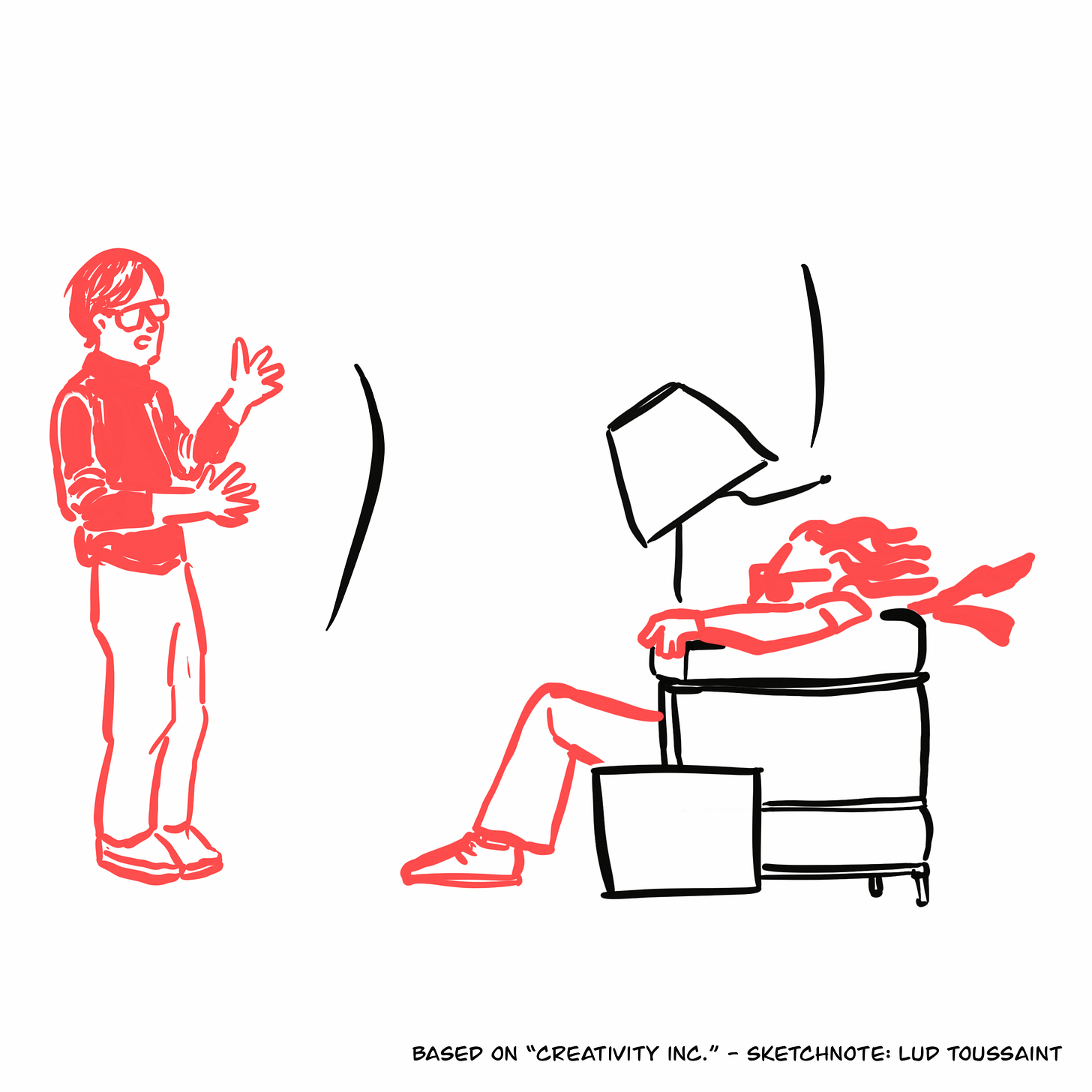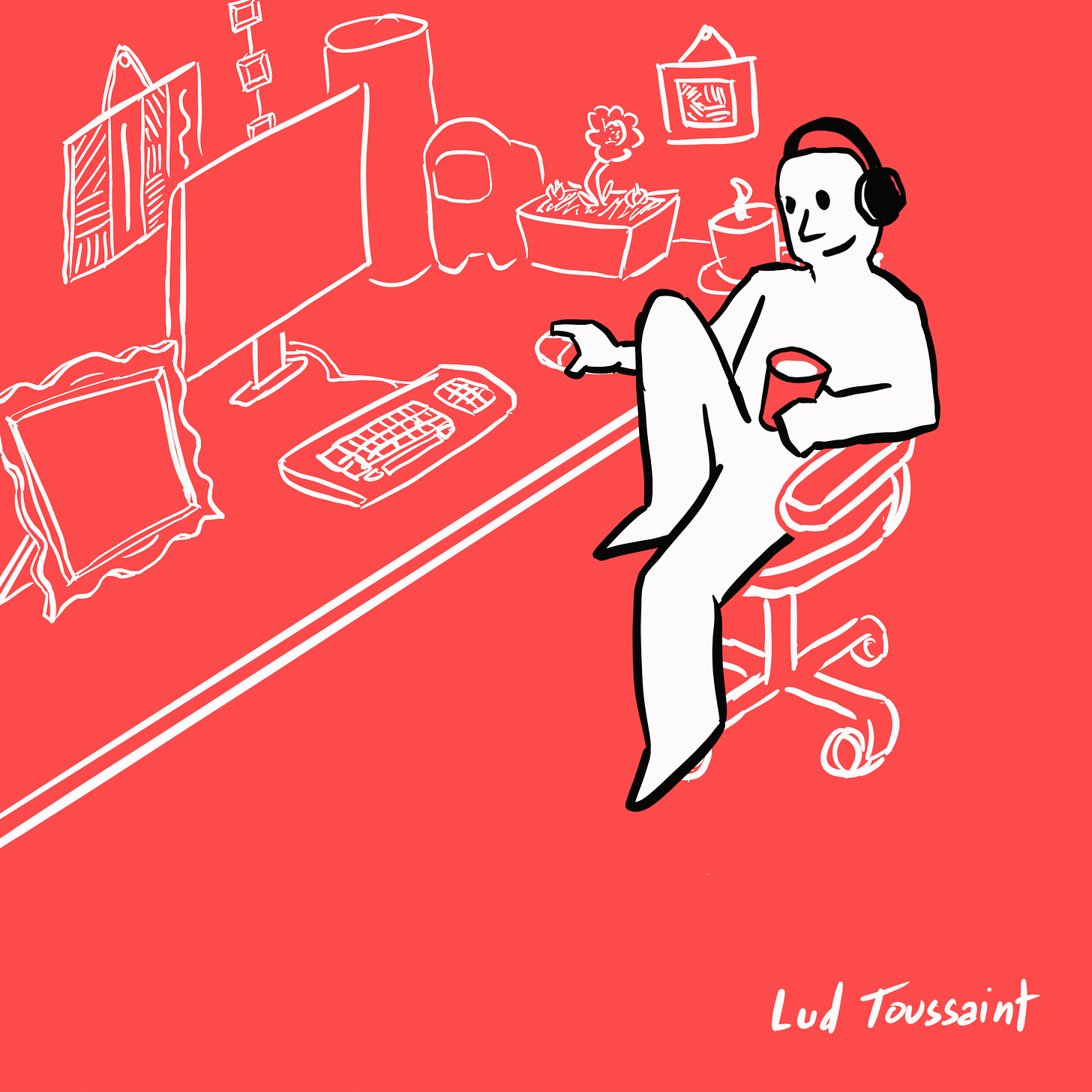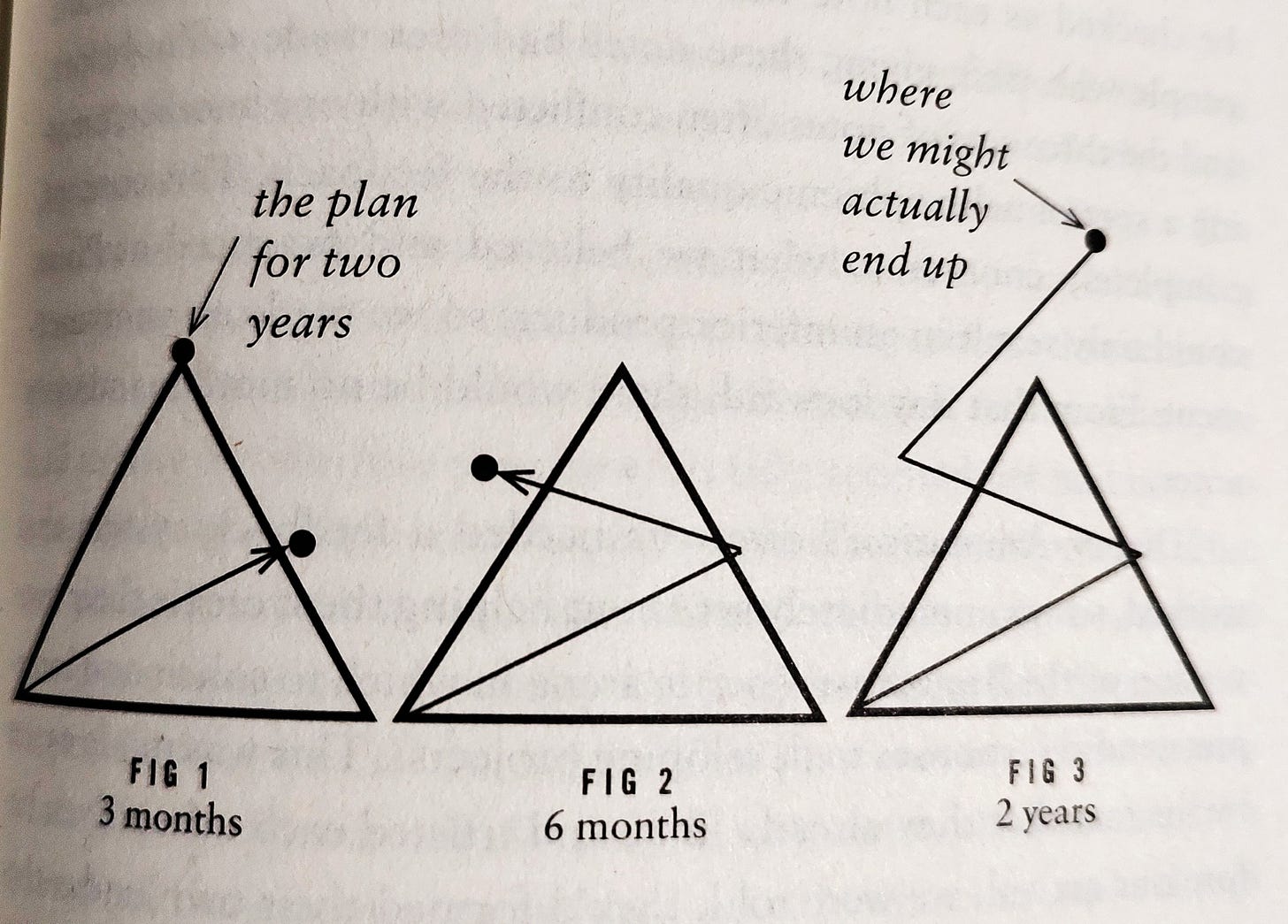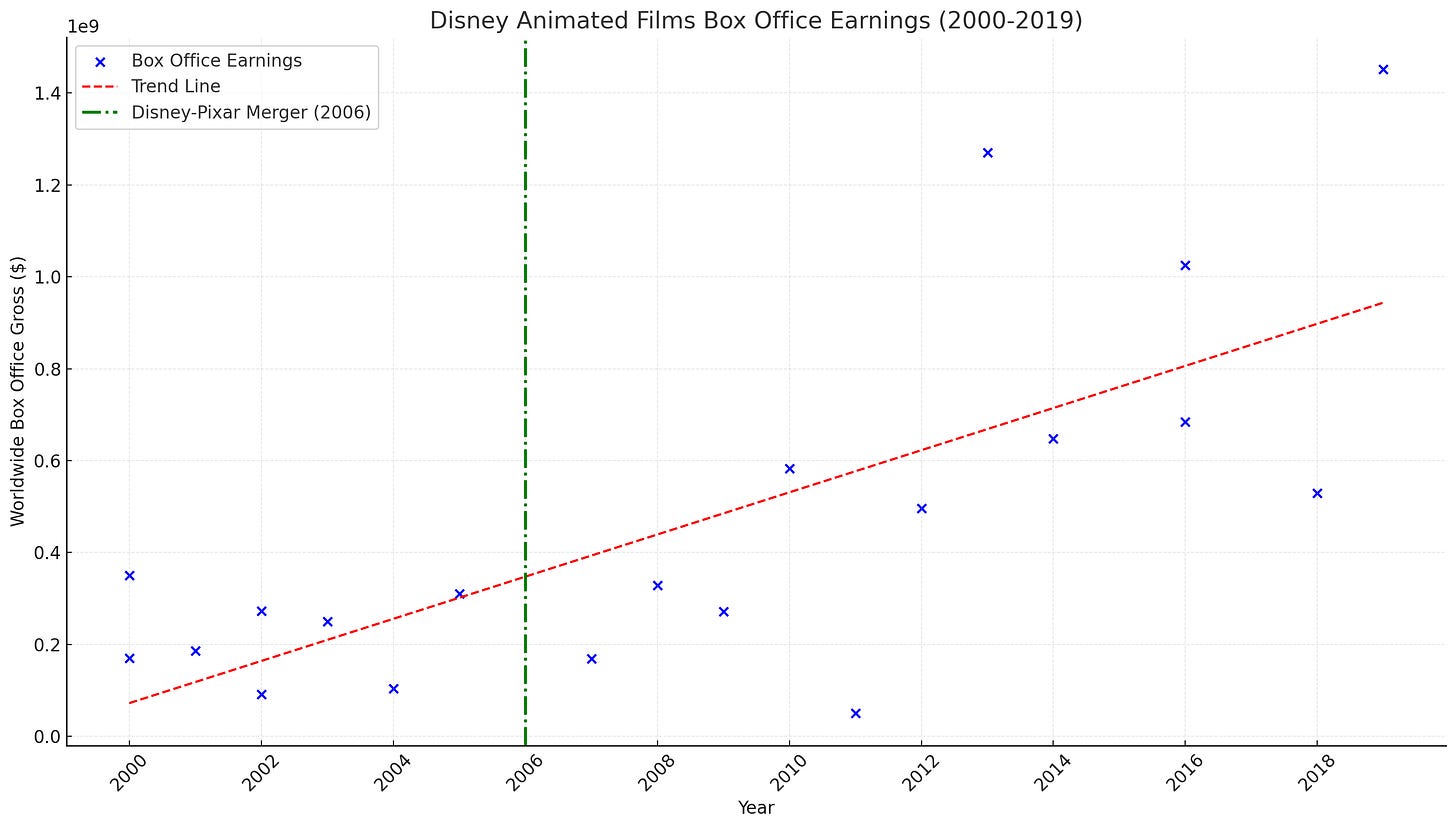Hey, hello. Grab a drink if needed, and make yourself comfortable!
Visual Summary
Welcome to our visual reading journey of 'Creativity Inc.' We've been exploring the book chapter by chapter for six months, and we're nearing the end! After the next post covering the final chapter and Afterword, we'll move on to a new book! (More on that at the end of the post).
If you missed the previous chapters, you can catch up by reading the earlier posts, starting with the first or going backward.
The last chapter talked about the mental models used by Pixar directors to help them in their work. In this chapter, a new challenge presents itself… Can the approach taken by Pixar translates in another setting ?
Consider subscribing to support me and receive the future visual summaries!
Chapter 12 - A New Challenge
“I’m thinking of selling Pixar to Disney…”
Steve Jobs had dropped a bombshell on Pixar’s leaders Ed Catmull & John Lasseter.
At the time, Disney's CEO Bob Iger started to notice that most beloved recent characters came from Pixar movies. He wanted to attempt something that had failed before: merging the two companies.
Encouraged by Steve Jobs, Ed & John finally met with Bob Iger and got swayed by his passion. However they didn’t want Pixar to lose its soul in the process, so they put some key conditions:
Pixar and Disney Animations would work separately, solving their own problems, and Pixar employees needed to be able to keep their quirks and traditions!
The agreement, called the "Five Year Social Compact," promised to maintain not just the bonus structure and healthcare plan of employees, but also some unconventional practices:
- Paper airplane contests,
- No assigned parking for any employee or executive,
- Movie screenings,
- Being allowed to personalize your desk,
- Being allowed to be creative with your title on your business card,
- Holiday parties, etc.
These conditions may sound trivial; but they represented the creativity, playfulness, and individuality that made Pixar special. The Soul of Pixar would remain protected.
House-Warming
Ed and John however, now also leading Disney Animations, had to figure out how to bring the principles that made them successful into a new environment, so obviously their first priority became:
Office remodeling!
A strange way to start, right ? But the idea was not to make the office more trendy... It was to signal a cultural shift toward more transparency!
They transformed the exclusive top-floor executive suite into story rooms for filmmakers and placed their own office in the center of activity, with an adjacent coffee area and glass walls to encourage interaction.
Side-note: L.David Marquet in his book "Leadership is Language" would call that approach "Reducing the Power Gradient", and it is crucial for any leader that wants true connection with his team and hear what is really happening in the front lines.
Feedback and Adaptation
It became quickly clear to Ed Catmull that change was needed on how Disney approached planning and feedback:
Planning was thought in a linear way. He drew the below picture to explain his vision to the HR lead: Flexibility and Adaptation.
Feedback seemed even worse, leaders (with no directing experience) were demanding mandatory (even contradictory) changes to each film. Ed stopped that process and encouraged instead the “Story Trust,” an existing underground group, to take inspiration on the “Braintrust” of Pixar and become a candid feedback system.
Driving fear out
Ed Catmull, describes in the book how at Disney Animation, error-prevention seemed to have been the main priority… A culture of fear slowing them down and preventing creative solutions from emerging.
But now that culture started to evolve, the “Story Trust” gained confidence, research trips started to be valued… Creativity was slowly getting back to the center stage.
Until one day, Ed knew something had clicked; they were facing an issue with “Jack” the hamster side-kick on the movie “Bolt” and he re-emphasized that:
"You don't need permission to fix problems,"
Three employees took the initiative to re-rig the character in just a few days; a work that had previously been estimated to take 6 months!
What had changed? They took the risk of failing and didn't expect perfection.
The results speak for themselves: See below Disney Animation's box office earnings from 2006 to 2019 under Ed Catmull's leadership.
That’s it for now! Hope you enjoyed it.
As mentioned we will soon move to a new book. In the last post poll, we got just 2 responses, both for the book “Hidden Potential” by the famous organizational psychologist Adam Grant.
If that sounds good to you, could you write “Hidden” in the comments? Or if you would have another suggestion, could you write it as well?
Thank you!











Your drawings are so good, Lud!! I love the style, color use, and the subtle way they are animated!
Loving the subtle animations